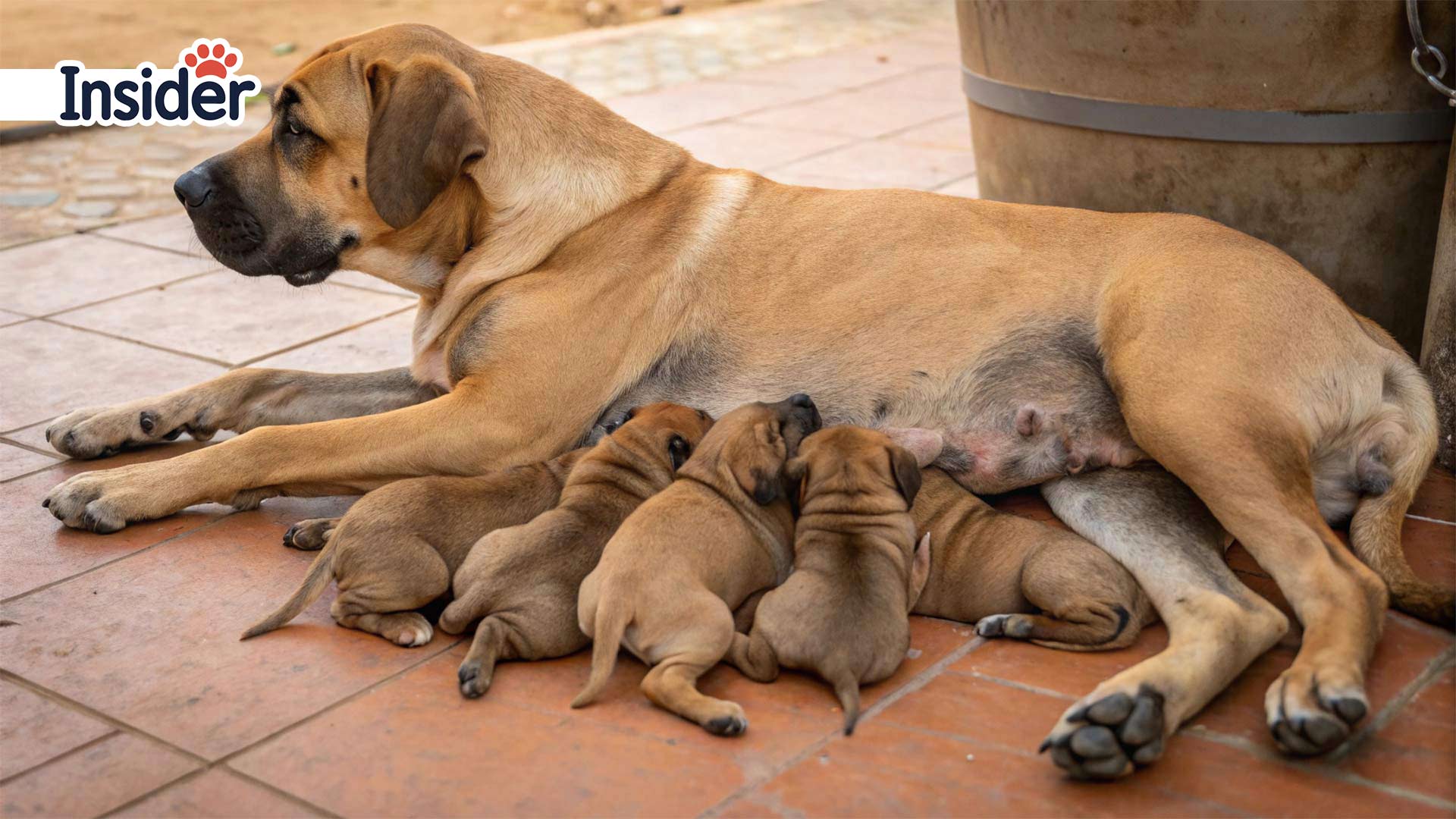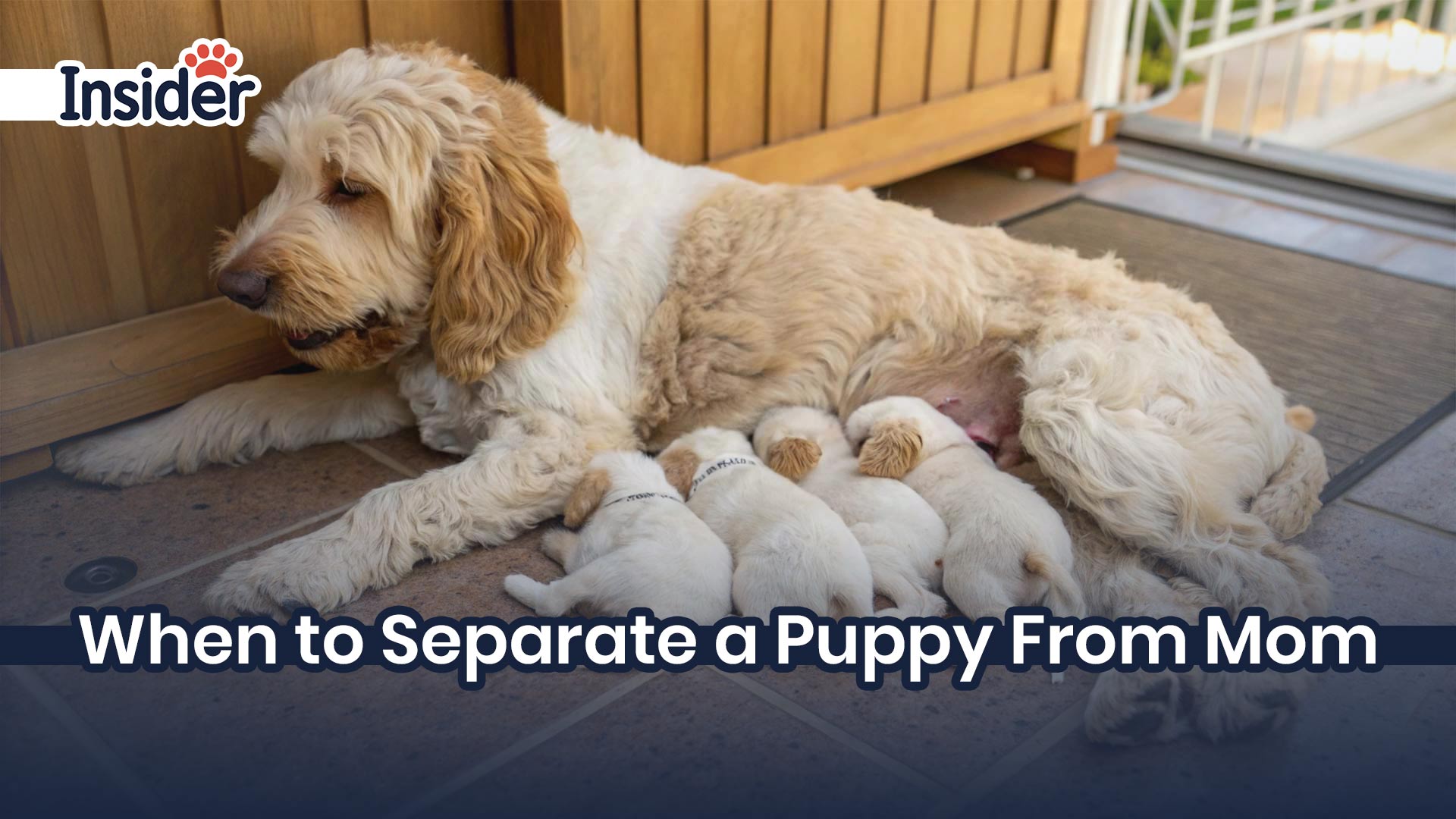Introduction
Picture this: you’ve fallen head over heels for an adorable little puppy, and you can’t wait to bring your new furry family member home. But hold on just a minute! Before you scoop up that precious pup, there’s something incredibly important you need to know about timing.
Separating a puppy from its mother isn’t just about when you’re ready to welcome a new pet into your life; it’s one of the most crucial decisions that will shape your puppy’s entire future. Think of mama dog as your puppy’s first teacher, therapist, and best friend all rolled into one furry package. She’s not just providing milk; she’s giving life lessons that no human can replicate.
| Feature | Details |
|---|---|
| General Ideal Separation Age | 8-12 weeks |
| Small/Toy Breeds Ideal Age | Closer to 10-12 weeks (for better physical/emotional development) |
| Weaning Process Start | Around 3-4 weeks of age |
| Weaning Process Completion | Usually by 7-8 weeks of age |
| Benefits of Correct Timing | Better bite inhibition, social skills, immune system, and emotional stability |
| Risks of Premature Separation | Behavioral issues (fear, aggression), health problems, poor development |
| Key Maternal Roles | Nutrition, teaching bite inhibition, social cues, comfort, and security |
| Preparation for New Puppy | Puppy-proof home, create cozy den, gather supplies, plan gradual intro |
Table of Contents
Why This Decision Matters More Than You Think
Every day, countless puppies are separated from their mothers too early, and the consequences can last a lifetime. We’re talking about behavioral issues, health problems, and emotional challenges that could have been completely avoided with just a little patience and knowledge.
But here’s the good news: you’re here reading this, which means you care about doing right by your future four-legged friend. And that’s exactly what separates responsible pet parents from the rest!
What You’ll Discover in This Guide
In this comprehensive guide, we’re going to walk you through everything you need to know about this critical transition. You’ll learn the perfect timing for separation, understand the warning signs of premature separation, and discover practical steps to make the process as smooth as possible for both you and your puppy.
We’ll also share insider tips from experienced dog parents and help you avoid the common mistakes that many new owners make. By the time you finish reading, you’ll have the confidence to make informed decisions that will set your puppy up for a happy, healthy, and well-adjusted life.
Whether you’re a first-time dog owner or adding another member to your pack, this information could be the difference between raising a confident, social dog and dealing with years of behavioral challenges. So grab a cup of coffee, settle in, and let’s dive into this journey together. Your future puppy will thank you for it!

Why the Timing of Separation Matters
Think of those first few weeks of a puppy’s life as their “foundation period,” kind of like building a house. If you rush the foundation, everything else becomes shaky. Your puppy’s early experiences with mom aren’t just sweet bonding moments; they’re shaping who your dog will become for the rest of their life.
More Than Just Milk: What Mom Provides
Sure, mama dog feeds her babies, but that’s just the tip of the iceberg. She’s running a full-time puppy university! Every day, she’s teaching crucial life skills that will determine whether your future dog is confident and well-adjusted or anxious and problematic.
During those precious early weeks, the mom dog is:
- Providing the perfect nutrition that boosts immune system development
- Teaching bite inhibition (that’s how puppies learn not to bite too hard)
- Showing proper social cues and dog body language
- Offering comfort and security during scary or stressful moments
- Helping regulate body temperature and sleep patterns
The Physical Foundation
A mother’s milk isn’t just food; it’s liquid gold packed with antibodies that protect puppies from diseases. This natural immunity boost lasts for months and gives your puppy the best possible start in life. Plus, the nursing process itself helps develop strong jaw muscles and proper oral development.
Emotional and Behavioral Building Blocks
Here’s where things get interesting. Mom dog is your puppy’s first therapist and teacher rolled into one. She shows them how to handle stress, communicate with other dogs, and even how to play appropriately. Those little corrections she gives when puppies get too rough? That’s gold standard training you can’t replicate.
The Ripple Effect of Early Separation
When puppies leave their mom too early, it’s like pulling a student out of school before they’ve learned to read. The effects ripple through their entire lives. We’re talking about dogs who might struggle with anxiety, have trouble making friends with other dogs, or develop destructive behaviors that drive their human families crazy.
Research shows that puppies separated too early are more likely to become reactive, fearful, or aggressive. They might have trouble learning house rules, struggle with being alone, or become overly clingy with their new families.
But here’s the beautiful part: when timing is done right, you get a puppy who’s confident, social, and ready to take on the world with you as their new best friend.

The Ideal Window: When to Separate a Puppy
General Consensus: 8-12 Weeks
Here’s the golden rule that most dog experts agree on: 8 to 12 weeks is the sweet spot for bringing your puppy home. This isn’t just a random number; it’s based on decades of research and real-world experience from breeders, veterinarians, and animal behaviorists.
Think of this window as your puppy’s “graduation period. ” By 8 weeks, they’ve learned the basics from mom and are ready to start their next chapter with you. But there’s no rush to grab them the second they hit that 8-week mark!
Why This Timeline Works
At 8 weeks old, puppies have typically:
- Finished weaning from mother’s milk
- Learned basic bite inhibition and play manners
- Developed enough independence to handle separation
- Built a foundation of social skills with littermates
The Case for Waiting Until 12 Weeks
Many experienced breeders and experts prefer the 10-12 week mark, especially for smaller breeds like Chihuahuas, Yorkshire Terriers, or Maltese. Here’s why waiting those extra few weeks can be a game-changer:
For Small and Toy Breeds
Tiny puppies need more time to develop physically and emotionally. They’re more fragile, need extra socialization, and benefit from those additional weeks of mom’s guidance. A 12-week-old Yorkie is much better equipped to handle the big world than an 8-week-old one.
Finding Your Perfect Timing
While 8-12 weeks is the general guideline, your specific puppy might benefit from being on either end of that spectrum. Trust your breeder’s expertise; they know their puppies best and can guide you toward the perfect pickup time for your future furry family member.
The Weaning Process: A Gradual Transition
Weaning your little furry bundles of joy isn’t something that happens overnight; it’s more like a gentle dance between mom and her babies that unfolds over several weeks. This natural process typically kicks off when the puppies hit their 3 to 4 week milestone, and by the time they’re 7 to 8 weeks old, they should be completely independent from their mama’s milk bar.
You’ll notice that mother dogs have an incredible instinct for this whole process. As her babies grow bigger and those tiny teeth start coming in (ouch!), she’ll naturally begin to create some distance during nursing sessions. She might stand up more often during feeding time or even walk away when the little ones get too enthusiastic with their nursing. This isn’t her being mean; it’s her smart way of encouraging them to explore other food options.
When it comes to introducing solid food, think of it as baby steps toward independence. Start by offering high-quality puppy food that’s been softened with warm water or puppy milk replacer until it reaches a mushy, porridge-like consistency. Place this mixture in shallow dishes so the tiny pups can easily access it without diving face-first into their dinner. Don’t worry if they make a mess at first getting food on their faces, paws, and everywhere else; it’s all part of the learning experience!
How to Separate the Puppy from Its Mother and Littermates
Bringing a new puppy home is one of life’s most exciting moments, but it’s also a big transition for your furry little friend. Think of it like a child’s first day at a new school, with the right preparation and gentle approach, you can make this life-changing moment as smooth as possible for everyone involved.
Preparation is Key
Before your adorable bundle of joy sets paw in your home, you’ll want to create a puppy paradise that screams “welcome home!” Start by puppy proofing your space, removing anything dangerous or valuable that curious little teeth might find appealing. Set up a cozy sleeping area with soft blankets, gather age-appropriate toys, and make sure you have all the essentials like food bowls, a collar, and puppy-safe cleaning supplies. Creating this haven ahead of time means you can focus entirely on helping your new buddy feel loved and secure when they arrive.
Gradual Separation
Here’s where patience becomes your best friend; rushing the separation process is like ripping off a band-aid when you could gently peel it off instead. If possible, work with your breeder to arrange short practice separations while the puppy is still at their original home. Start with just 30 minutes to an hour away from mom and siblings, then gradually increase these mini adventures over several days. This gentle approach helps your puppy build confidence and reduces the shock of suddenly being alone in a completely new world.
The Day of Transition
The big day has arrived, and your heart is probably racing with excitement! Keep the energy calm and positive; puppies are like little emotional sponges who pick up on your vibes. Bring a blanket or toy that smells like their mother and littermates to provide familiar comfort during the journey. Once home, give your new family member time to explore at their own pace without overwhelming them with too much attention or too many new faces all at once.
Post-Separation Care and Adjustment
The first few weeks are all about building trust and establishing your new life together. Stick to a consistent routine for feeding, potty breaks, and bedtime. Puppies thrive on predictability just like kids do. Expect some whining or restlessness during the first few nights as they adjust to sleeping without their warm pile of siblings. Continue socializing your puppy with new sights, sounds, and gentle experiences, but remember that patience and consistency will be your secret weapons during this adjustment period.

Risks and Consequences of Premature Separation
Taking a puppy away from their mother and siblings before they hit that crucial 8-week mark is like asking a kindergartner to handle high school problems they simply aren’t ready for. When puppies are separated too early, they miss out on essential life lessons that only their canine family can teach them. This premature separation often leads to a cascade of emotional and behavioral challenges that can follow your furry friend throughout their entire life.
Behavioral and Emotional Challenges
Puppies who leave their families too soon often struggle with fear, anxiety, and stress that seems to come out of nowhere. Without proper time to learn social cues from their littermates, these little ones may develop problematic behaviors like excessive barking when they feel overwhelmed, showing aggression toward other dogs or people, or becoming destructive when left alone. Perhaps most concerning is their difficulty with bite inhibition; they never learned from their siblings that biting too hard ends playtime, which can create serious issues later on.
Health and Development Issues
The physical consequences of early separation are just as serious as the emotional ones. Puppies who leave too early often have weaker immune systems because they didn’t receive enough protective antibodies from their mother’s milk, and the stress of premature separation can suppress their developing immune response. These pups may struggle to thrive in their new homes, showing poor appetite, digestive issues, or general failure to grow at a healthy rate. They also tend to have reduced resilience and coping skills, making it harder for them to bounce back from new experiences or adapt to changes in their environment.
Conclusion
When it comes to bringing your new furry family member home, remember that good things truly come to those who wait. Those extra few weeks might feel like forever when you’re excited to snuggle your new puppy, but this patience is one of the greatest gifts you can give them. By waiting until your puppy is at least 8 to 12 weeks old, you’re setting them up for a lifetime of better health, stronger emotional resilience, and happier relationships with both humans and other dogs.
Think of this waiting period as an investment in your future together; every extra day spent with their mother and littermates is like putting money in the bank for your puppy’s emotional and behavioral development. A well-adjusted puppy who has learned proper social skills will be easier to train, more confident in new situations, and generally a more joyful companion throughout their life. The difference between a puppy who was rushed into separation and one who was given proper time to mature is often visible for years to come, making that initial patience worth it.
Choose Your Breeder Wisely
As a responsible future pet parent, one of the most important decisions you’ll make is choosing a breeder who understands and respects these developmental needs. Look for breeders who refuse to let puppies go before 8 weeks, who encourage you to visit and meet the mother dog, and who seem genuinely concerned about where their puppies are going. A good breeder will ask you questions, too; they want to make sure their precious puppies are going to homes that will love and care for them properly. Remember, a breeder who’s willing to let puppies go too early is probably cutting corners in other important areas, too, so trust your instincts and choose someone who puts puppy welfare first.
FAQ
What is the absolute best age to separate a puppy from its mother?
Most experts agree the ideal window is between 8 and 12 weeks. Puppies learn crucial social skills and bite inhibition from their mother and littermates during this time.
Are there risks if I take a puppy home before 8 weeks?
Yes, puppies separated too early are more prone to behavioral problems like fear, anxiety, and aggression, as well as health issues due to missing out on vital maternal antibodies and learning.
Why might some breeders recommend waiting until 12 weeks, especially for small breeds?
Smaller and toy breed puppies develop more slowly and are more fragile. Extra time with their mother helps them mature physically and emotionally, leading to a more confident and well-adjusted dog.
What important lessons does a mother dog teach her puppies?
Mother dogs teach essential life skills, including bite inhibition (how hard to bite during play), appropriate social behavior with other dogs, coping mechanisms for stress, and provide comfort and security.
How can I make the transition smoother when I bring my new puppy home?
Prepare your home in advance, use a blanket with the mother’s scent for comfort during travel, introduce the puppy to its new space gradually, maintain a consistent routine, and be patient as it adjusts.

